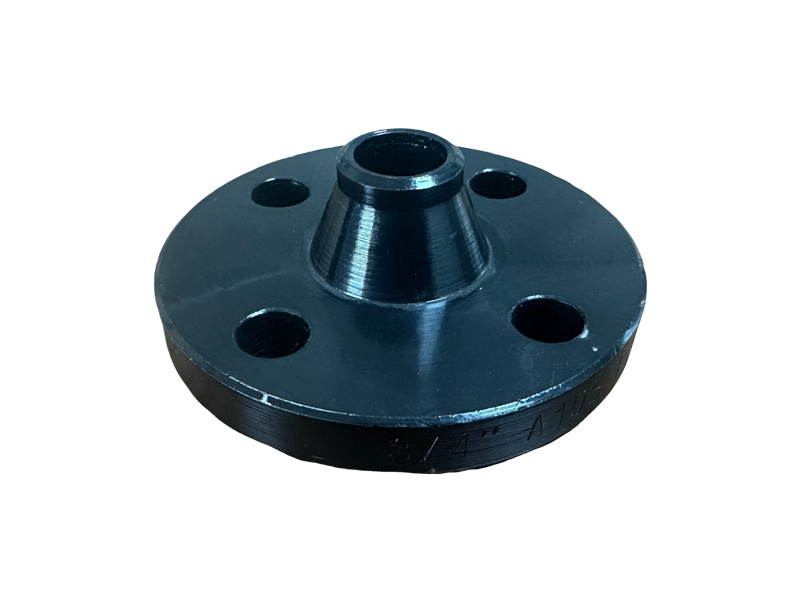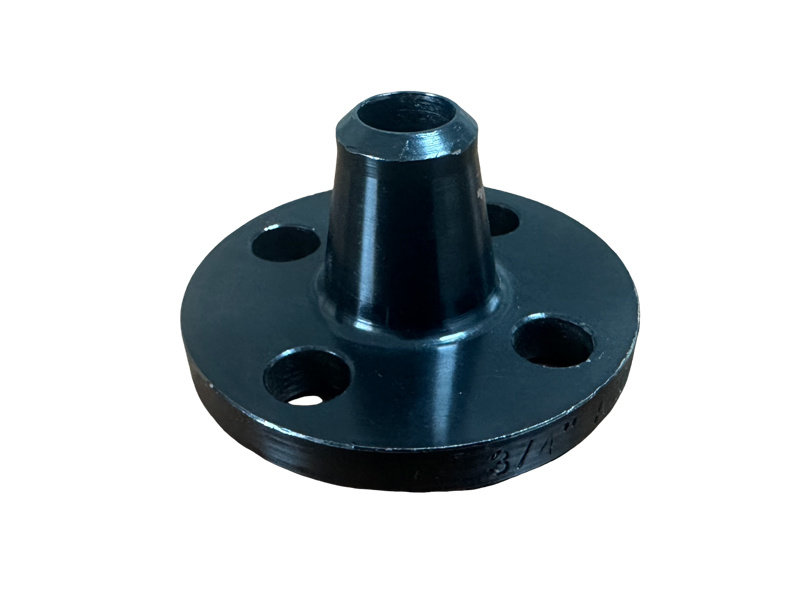-
Understanding the Importance of BS4504 PN16 Weld Neck Flanges in Modern Construction
Date:
08 Jun,2025
Understanding the Importance of BS4504 PN16 Weld Neck Flanges in Modern Construction Table of Contents 1. Introduction to BS4504 PN16 Weld Neck Flanges 2. Specifications and Standards of BS4504 PN16 Weld Neck Flanges 3. Applications of BS4504 PN16 Weld Neck Flanges in Construction 4. Benefits of Using BS4504 PN16 Weld Neck Flanges 5. Installation Guidelines for BS4504 PN16
Understanding the Importance of BS4504 PN16 Weld Neck Flanges in Modern Construction
Table of Contents
- 1. Introduction to BS4504 PN16 Weld Neck Flanges
- 2. Specifications and Standards of BS4504 PN16 Weld Neck Flanges
- 3. Applications of BS4504 PN16 Weld Neck Flanges in Construction
- 4. Benefits of Using BS4504 PN16 Weld Neck Flanges
- 5. Installation Guidelines for BS4504 PN16 Weld Neck Flanges
- 6. Maintenance and Inspection of Weld Neck Flanges
- 7. Common Issues and Solutions with BS4504 PN16 Weld Neck Flanges
- 8. Frequently Asked Questions about BS4504 PN16 Weld Neck Flanges
- 9. Conclusion
1. Introduction to BS4504 PN16 Weld Neck Flanges
In modern construction, the integrity and reliability of piping systems are paramount. **BS4504 PN16 Weld Neck Flanges** emerge as vital components that ensure robust connections between pipes. These flanges are specifically designed to withstand significant pressure and temperature variations, making them indispensable in various industrial applications, including water treatment, oil and gas, and chemical processing. Their unique design facilitates a strong weld joint, reducing the risk of leaks and failures.
2. Specifications and Standards of BS4504 PN16 Weld Neck Flanges
Understanding the specifications of BS4504 PN16 Weld Neck Flanges is crucial for engineers and project managers. These flanges conform to the British Standards (BS) 4504, which outlines the dimensional and material requirements.
2.1 Material Composition
Typically manufactured from carbon steel, stainless steel, or alloy steel, these flanges offer a range of corrosion resistance and strength properties. The choice of material directly impacts the flange's performance in various environments.
2.2 Dimensions and Pressure Ratings
The "PN16" designation indicates a maximum allowable pressure of 16 bar (approximately 232 psi) at room temperature. The dimensions of these flanges follow specific guidelines, ensuring compatibility with a wide range of piping systems.
2.3 Welding Standards
Weld neck flanges are designed for butt welding, which creates a smooth transition between the flange and pipe. This welding method minimizes turbulence and pressure drop, enhancing the system’s efficiency.
3. Applications of BS4504 PN16 Weld Neck Flanges in Construction
BS4504 PN16 Weld Neck Flanges find applications across various sectors due to their versatility and reliability.
3.1 Oil and Gas Industry
In the oil and gas sector, these flanges are used to connect high-pressure pipelines, ensuring safe and efficient transport of hydrocarbons.
3.2 Water Treatment Facilities
Water treatment plants utilize these flanges for connecting pipes that carry treated and untreated water, ensuring durability and leak prevention.
3.3 Chemical Processing Plants
Chemical plants rely on the robustness of these flanges to handle corrosive substances, maintaining system integrity and safety.
4. Benefits of Using BS4504 PN16 Weld Neck Flanges
Utilizing BS4504 PN16 Weld Neck Flanges offers several advantages that enhance construction quality and efficiency.
4.1 Enhanced Strength and Durability
The design of weld neck flanges provides exceptional strength, making them suitable for high-pressure applications. Their durability ensures prolonged service life, reducing the need for frequent replacements.
4.2 Leak Prevention
The welded joint creates a robust connection that minimizes the chances of leaks, vital for maintaining safety and efficiency in fluid transport.
4.3 Versatility in Applications
These flanges can be used in various environments, including extreme temperatures and pressures, making them adaptable to different industrial needs.
5. Installation Guidelines for BS4504 PN16 Weld Neck Flanges
Proper installation is essential for maximizing the performance of BS4504 PN16 Weld Neck Flanges.
5.1 Preparing the Joint
Ensure that the surfaces of both the flange and the pipe are clean and free from debris. Proper alignment of the flange and pipe is crucial to prevent stress concentrations.
5.2 Welding Procedure
Follow industry-standard welding procedures to achieve a strong weld. Ensure that the welding process does not introduce excessive heat, which can affect the material properties.
5.3 Post-Installation Inspection
Conduct thorough inspections after installation to identify any potential issues. Visual inspections and pressure testing can help ensure the integrity of the joint.
6. Maintenance and Inspection of Weld Neck Flanges
Regular maintenance is vital to prolonging the life of BS4504 PN16 Weld Neck Flanges.
6.1 Routine Inspections
Schedule routine inspections to check for signs of wear, corrosion, or leaks. Early detection of issues can prevent catastrophic failures.
6.2 Cleaning Procedures
Implement cleaning procedures to remove buildup of contaminants that may affect performance. Special attention should be given to flanges in corrosive environments.
7. Common Issues and Solutions with BS4504 PN16 Weld Neck Flanges
Despite their robust design, issues can arise with BS4504 PN16 Weld Neck Flanges.
7.1 Corrosion
Corrosion can compromise the integrity of the flange. Use corrosion-resistant materials and coatings to mitigate this issue.
7.2 Misalignment
Misalignment during installation can lead to stress and eventual failure. Careful alignment and proper installation techniques can prevent this problem.
8. Frequently Asked Questions about BS4504 PN16 Weld Neck Flanges
8.1 What are BS4504 PN16 Weld Neck Flanges used for?
BS4504 PN16 Weld Neck Flanges are used to connect pipes in high-pressure systems, providing strength and leak prevention.
8.2 How do I choose the right flange for my project?
Consider factors such as pressure rating, material compatibility, and environmental conditions when selecting a flange.
8.3 What are the advantages of weld neck flanges over other types?
Weld neck flanges offer superior strength, reduced risk of leaks, and are suitable for high-pressure applications compared to other flange types.
8.4 How often should flanges be inspected?
Routine inspections should be carried out regularly, ideally at least once a year, or more frequently in demanding environments.
8.5 Can weld neck flanges be reused?
While they can be reused, it is essential to inspect them for damage or wear before reinstallation to ensure safety and reliability.
9. Conclusion
In summary, **BS4504 PN16 Weld Neck Flanges** are indispensable components in modern construction and industrial applications. Their robust design, ability to handle high pressures, and versatility make them a top choice for engineers and contractors. By understanding their specifications, applications, and maintenance requirements, industry professionals can ensure the reliability and safety of their piping systems. As construction techniques continue to evolve, the importance of such high-quality flanges will only increase, solidifying their role in the future of construction.Previous:
Related News
08 Jun,2025
Understanding the Importance of BS4504 PN16 Weld Neck Flanges in Modern Construction
Understanding the Importance of BS4504 PN16 Weld Neck Flanges in Modern Construction Table of Contents 1. Introduction to BS4504 PN16 Weld Neck Flanges 2. Specifications and Standards of BS4504 PN16 Weld Neck Flanges 3. Applications of BS4504 PN16 Weld Neck Flanges in Construction 4. Benefits of Using BS4504 PN16 Weld Neck Flanges 5. Installation Guidelines for BS4504 PN16
07 Jun,2025
Understanding ANSI Weld Neck Flange 150lb: A Comprehensive Guide
When it comes to piping systems, the integrity and reliability of connections are paramount, and this is where the ANSI weld neck flange 150lb comes into play. Designed for high-pressure applications, this type of flange is characterized by its long neck, which provides a gradual transition from the pipe to the flange. This design helps to reduce stress concentrations at the weld joint and enhance
06 Jun,2025
Why Choose 150lb ANSI Weld Neck Flanges for Your Plumbing Projects?
Why Choose 150lb ANSI Weld Neck Flanges for Your Plumbing Projects? Table of Contents 1. Introduction to ANSI Weld Neck Flanges 2. What Are Weld Neck Flanges? 3. Specifications of 150lb ANSI Weld Neck Flanges 4. Advantages of Using 150lb ANSI Weld Neck Flanges 5. Applications of 150lb ANSI Weld Neck Flanges 6. Installation Guide for Weld Neck Flanges 7. Maintenance and
Contact information
Address: North Ring Industrial Zone, Mengcun County
Telephone: 86 0317- 6729218 86 0317-6727320
Fax: 0317-6727310
mobile phone: 86 13833761688whatsapp: 86-13780271039
Email: shengyuanflange@163.comLeave Message










